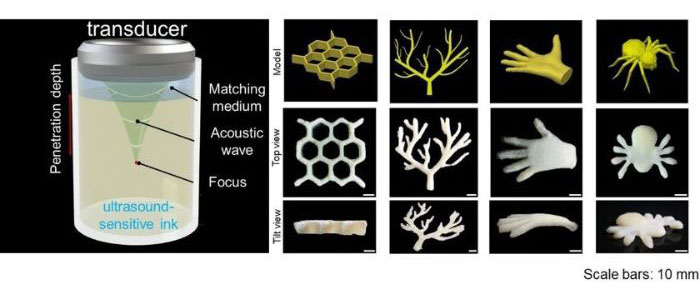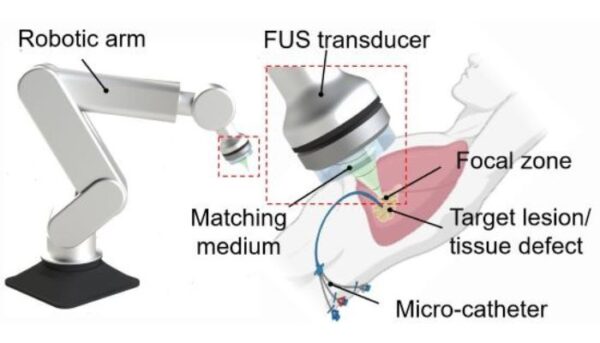New Ultrasound Process Could Enable In-Body 3D Printing

Imagine a future where organs or tissues can be 3D printed directly inside the human body. This once far-fetched idea is now on the horizon, thanks to a pioneering 3D printing process developed by researchers at Duke University and Harvard Medical School. Leveraging focused ultrasound and a bio-compatible ink, this groundbreaking technique holds immense potential, ranging from bone healing to heart valve repair, promising safer and less invasive surgical procedures.
The challenges of in-body printing have persisted due to limitations with existing processes like extrusion or photopolymerization. The newly introduced deep-penetrating acoustic volumetric printing (DVAP) aims to overcome these hurdles. Unlike traditional extrusion, which necessitates external access, or photopolymerization hindered by the scattering of light through skin and organs, DVAP introduces a novel approach.
Randy King, Ph.D., a program director at the Division of Applied Science & Technology at NIBIB, explains the potential of DVAP: “This potential new application, built on years of technology advancements, could set the stage for something previously thought impossible: through-tissue 3D ultrasound printing.”

This technique used ultrasound-sensitive ink to build 3D structures at various depths, including through tissues in the human body
The process of DVAP revolves around focused ultrasound, a well-established non-invasive therapeutic technique in medicine. While ultrasound has been used for decades in various clinical applications, DVAP introduces a sonicated ink, or sono-ink, sensitive to ultrasound. Comprising four key components – a compound to absorb ultrasound waves, a microparticle for viscosity control, a polymer for structure, and a heat-absorbing salt triggering solidification – this sono-ink enables the printing of biocompatible structures through the body’s dense tissues.

A closer look at how the DVAP process works
The DVAP technology is not only groundbreaking in its ability to facilitate in-body 3D printing but also exhibits compatibility with biological tissues. Experimentation involving tissue creation for a pig liver and a mock surgery on a goat heart has shown promising results. This groundbreaking technology could potentially replace invasive surgical procedures, offering new possibilities in surgery and therapy.
Junjie Yao, associate professor of biomedical engineering at Duke, highlights the significance of DVAP: “Because we can print through tissue, it allows for a lot of potential applications in surgery and therapy that traditionally involve very invasive and disruptive methods. This work opens up an exciting new avenue in the 3D printing world, and we’re excited to explore the potential of this tool together.” The future of in-body 3D printing seems closer than ever, with DVAP paving the way for transformative advancements in the medical field.
You can find out more in the press release from the National Institute of Health HERE, or get access to the study HERE.
